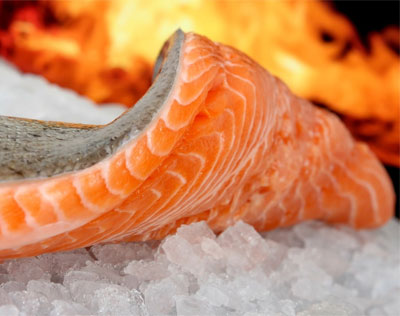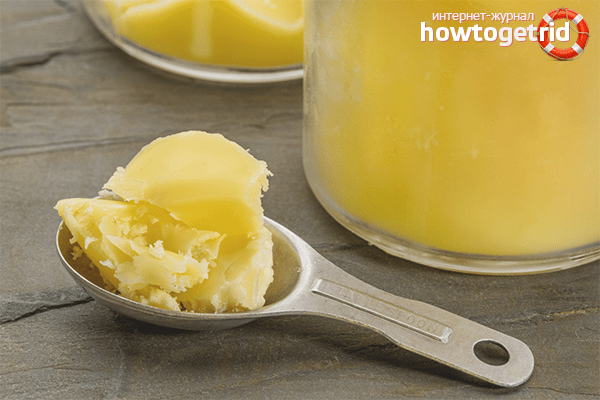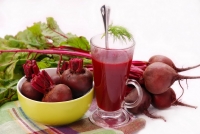Trace iodine for the human body. Iodine in the human body
Iodine in the body is the basis of thyroid hormones, the thyroid gland can not do without iodine, because 65% of the thyroid gland releases hormones from iodine, which correspond to the metabolism in the body and regulate the state of the main metabolism in the body. Iodine is necessary for the growth of cells of all body tissues Human hormones secreted from iodine regulate the activity of the human brain and nervous system, they make the brain work actively, they regulate the sex and mammary glands. Iodine is necessary to strengthen the immune system, to increase the body's resistance to colds and infectious diseases. Iodine fights against atherosclerosis, lowering blood cholesterol. therefore iodine deficiency causes many diseases hormonal disorders, which sometimes do not have an outwardly expressed character. A constant lack of iodine leads to irregularities in the menstrual cycle, iodine deficiency leads to goiter, a person suffers from increased fatigue, lethargy, drowsiness, memory loss, irritability, depressed mood, impaired attention and decreased intelligence, forgetfulness, bouts of longing.
With iodine deficiency, the level of hemoglobin in the blood decreases, in which treatment with drugs does not give the desired effect, bone growth slows down, the skin becomes dry, hair falls out, a person is constantly chilled with chilliness. In case of iodine deficiency, atherosclerosis remains stable in the treatment of diet and medications, in the treatment of arrhythmia with medications there is no tangible and long-lasting effect, the pressure increases due to swelling of the vascular walls, swelling is formed around the eyes and general, in which the systematic administration of diuretics aggravates the condition of the body. Iodine deficiency during pregnancy increases the risk of developing miscarriages, and in born babies, delays in physical and mental development.
The main sources of iodine.
Most of the iodine we get with food, about 90%, the remaining 10% - with air and water.
Daily iodine requirement is:
1. for infants in the first year of life - 50 mcg
2.for children aged 1 year to 7 years - 90 mcg
3. for children from 7 to 12 years old - 120 mcg
4. for children 12 years and older and for adults - 150 mcg
5. for pregnant and lactating women - 200 mcg
Regardless of the iodine replenishment methods, it is optimally absorbed if the diet contains enough protein, iron, zinc, copper, vitamins A and E. The main storehouse of iodine is seaweed and other seafood: fish, fish oil, mussels, lobsters, shrimps, freshwater fresh fish. Vegetables- beets, lettuce, spinach, beans, onions, cabbage, potatoes, carrots, tomatoes, garlic. Fruits, berries, persimmons, apples, grapes, cherries, plums, apricots, strawberries. Dairy products - cheese, cottage cheese, milk. Cereals - millet, buckwheat.
In food products, the trace element iodine is contained in such quantities (in micrograms per 100 grams of crude product):
1. Buckwheat -3.5
2. Milk, potatoes - 5.8
3. Beets, carrots - 6.8
4. Liver, - 9.0
5. Oil - 9.0
6. Millet, wheat flour, wheat rolls, cabbage - 9, 5 - 9.7
7. Pea -10.5
8.Meat - 11.5
9. Cod -60.0
10..Salted herring - 77.0
11.Mintai - 150.0
12. Hake - 160.0
Methods to eliminate iodine deficiency
The main way to solve this problem is salt iodization, iodine preparations made from kelp are also common, the iodine-active drug recommended as an additional source of iodine is recommended for people involved in the liquidation of the accident at Chkrnobyl NPP. Iodine Active is recommended for adults and children over 14 years of age - 1-2 tablets 1 time per day with meals. ATTENTION! It is strictly forbidden to take alcoholic solutions of iodine inside.
Mistresses note
When cooking food to preserve iodine in cooked food, it is necessary:
- pour a minimum of water so that it only covers the food and close the lid tightly,
When the water boils, immediately reduce the heat - a strong boil leads to iodine loss,
It’s better to salt the dish not in the cooking process, but immediately before eating it,
Iodized salt stores its properties for 3-4 months after manufacture, it must be stored in a dry, closed place,
- it is better to cook vegetables whole or coarsely chopped, dip them immediately in boiling water,
- milk with prolonged boiling loses 25% of iodine,
- prolonged boiling destroys up to 50% of iodine in meat and fish, up to 30% in vegetables and fruits.
How to determine if iodine is enough for my own body?
1. Put an iodine grid on the inside of the thigh. To do this, take a hygienic stick, moisten it with 5% alcohol solution and draw vertical and horizontal strips to make 1 cm by 1 cm squares. If the iodine grid disappears after three hours, iodine is simply necessary for the body , 6-8 hours - iodine deficiency is not so noticeable, after a day - iodine in the body is normal. In this case, the iodine network is used as an anti-inflammatory agent in the treatment of respiratory diseases, as well as in pain with osteochondrosis, neuralgia, and neurasthenia.
2. A callus or coarse skin on the outside of the thumb indicates thyroid pathology and problems with iodine.
3. The need for purple color is given by people experiencing iodine deficiency in the body.
It is necessary for the synthesis of thyroid hormone - thyroxine, as well as for the creation of phagocytes - patrol cells in the blood, which should destroy debris and foreign bodies in the cells. Phagocytes are able to capture and digest foreign bodies, in particular microorganisms and even inferior cells.
Iodine deficiency
Lack of iodine causes serious metabolic disorders, contributes to the development of a basic disease and a decrease in immunity. Not only people, but also animals need iodine.
Why is too little iodine in some areas? The fact is that iodine compounds are easily soluble in water, therefore, in mountains or rocky areas located far from the seas, they are simply washed away by rains and streams of water. For example, in Japan, islands surrounded by the ocean have relatively little iodine both in water, in the air, and in soil, but the main food of local residents is seafood, from where residents get the necessary amount of iodine. And in Taiwan, where “seafood” is not traditionally eaten, bazedovoy disease is common, and even iodization of drinking water does not help reduce the incidence. In Poland, once there was also a large lack of iodine in the Subcarpathian region (15.5% of the population suffered from a base disease). Salt iodization helped reduce the number of patients to 2.9%. In children born to women suffering from bazedovoy disease, dwarfs or children with developmental delay and signs of cretinism are often born.
A lack of iodine, in addition to a basic illness or mental retardation, can cause changes in the chromosomes and cause cancer. Bazedova’s disease depends not only on a lack of iodine in soil and vegetation, but also on a lack of cobalt.
The amount of iodine in plants depends on the content of this element in the soil and on the ability of the plant to concentrate it. But there are substances that cause bazedovoy disease. For example, cruciferous plants, as well as nitrates and nitrites, which can turn into nitrosamines. Acetate nitrosamines cause an enlarged thyroid gland.
It must be remembered that eating soy causes an increase in the thyroid gland (sometimes five-fold), increases the need for iodine by 100%. This suggests that when using soy products, it is necessary to introduce sea salt, ocean fish, onions and green onions along with them in the diet.
Children and adolescents require more iodine than adults. Lack of iodine in the body causes serious metabolic disorders, contributes to the development of goiter. There are many compounds that have a similar effect, for example, some sulfonamide drugs.
The following should be the law of nutrition: the less iodine in the environment and food, the more care must be taken to introduce iodine-rich foods into the diet.
How much iodine does the body need?
It turns out that the body requires a negligible amount of this trace element - only 2-4 micrograms per 1 kg of body weight (on average). For an adult male, this will be 150-300 mcg per day, with a sick thyroid gland - 400 mcg. Young people during puberty, pregnant and lactating women require a particularly large amount of iodine - more than 400 micrograms. It should be remembered that part of the iodine is not excreted and reused by the body.
Products containing iodine
In 1 kg of vegetables - 20 - 30 micrograms of iodine, in 1 kg of grain - about 50 micrograms, in 1 liter of milk - about 35 micrograms, in 1 kg of cheese, eggs, animal fats - 35 micrograms, in 1 kg of fish - from 100 to 200 mcg of iodine (maximum).
Digested salt - “Extra” iodine lost, unlike rock salt, containing all the necessary trace elements for life.
Still, water is considered the richest source of iodine, although its content in water is different - either a lot or too little. The Baltic and Black Seas are rich in this element, and therefore people with thyroid disease should benefit from staying on the Baltic and Black Sea beaches, while direct sunlight should be avoided so as not to provoke thyroid growth.
Iodine in the human body
Iodine is a constant component of plant and animal organisms. In humans and animals, iodine comes from food, water and air.
Of the foods rich in iodine are: eggs, fish, milk. Near the sea, we partially satisfy the daily norm of iodine due to air. When absorbed, iodine affects the metabolism - enhances the oxidative processes and functions of the thyroid gland.
With a lack of iodine, the formation (synthesis) of the thyroid hormone - thyroxine - is disrupted, leading to the development of goiter. With increased thyroid function, the introduction of small doses of iodine has a beneficial effect on the body. In medical practice, iodine is used internally in the form of its salts (potassium iodide, sodium iodide), Lugol's solution, alcohol solution, tincture, and also in the form of various drugs.

Iodine is used not only for diseases of the thyroid gland, but also for atherosclerosis, for the treatment of syphilis (in the tertiary period), for inflammatory processes of the respiratory tract, chronic poisoning with mercury and lead, for the prevention and treatment of goiter in the places where goiter spreads. For this purpose, 1 to 2.5 g of potassium iodide per 100 kg of salt is added to table salt sold to the population in these places. Potassium iodide is also prescribed for breast mastopathy and other neoplasms in the endocrine glands. Outwardly, iodine is used in the form of alcohol solutions or water infusion, as a disinfectant, absorbable and cauterizing agent for inflammatory diseases of the skin and mucous membranes, minor skin wounds, as well as in surgical practice for disinfection of the surgeon's hands and the surgical field. For therapeutic purposes, with diseases of the thyroid gland, radioactive iodine is used. This method is based on the ability of the thyroid gland to accumulate iodine. With radioactive radiation, the activity of the gland decreases, which can lead to a therapeutic effect.
For the prevention of atherosclerosis, traditional healers advise to lubricate the body with iodine during the autumn-winter period as follows: with a cotton swab dipped in an alcohol or water solution of iodine, they draw a bracelet on the wrist of one hand, and the next day - on the wrist of the other, then draw the same bracelet first on one leg, and then on the other, continuing treatment for 10 days, followed by a break of 10 days, then you can start again.
For the prevention and treatment of atherosclerosis, they drink Lugol tincture 1 drop in 1 glass of water 2 times a week.
In case of stomach poisoning or dysentery, hepatitis drink iodinol, which can be prepared at home: pour potato starch (at the tip of a teaspoon), previously dissolved in cold water, into 1 liter of boiling water. Give 1 time to boil, remove from heat and cool. Dripping 5 drops of iodine (alcohol solution). Take: per 100 g of the workpiece, adding 10 drops of iodine there. Drink at bedtime and as much immediately after waking up.
With colds, iodine inhalations are done. Use iodine for burns, infections. However, with prolonged use of iodine and its preparations, increased sensitivity to it may develop and poisoning phenomena may develop - iodism (runny nose, urticaria, facial swelling, salivation, lacrimation, acne, etc.); all these manifestations may disappear after a temporary cessation of iodine and its preparations. Therefore, iodine preparations should not be prescribed without the advice of a doctor.
Often in advertising you can hear about how dangerous a lack of iodine in the body, and about the means that make up for this deficiency. This trace element is contained in a certain amount in the human body. Do you really need to replenish it? How to do this right? Anyway, why is iodine needed in the human body? Let's find out the truth.
Depending on the weight and age of the person, the amount of substance in the body can fluctuate and average about 25 mg. Although it is so small, it is enough to control many processes. So, most of it is contained in the thyroid gland, and the lack of a trace element in the body, first of all, harms this small, but very important organ.
Why does the thyroid gland need so much iodine? Simply put, it is necessary for the normal formation of hormones responsible for metabolism and the conversion of nutrients entering the body into energy necessary for human life. In addition, without these hormones, the growth and development of the child is impossible.
- muscle
- ovaries;
- blood.

A bit of history
Iodine occupies the 53rd position in the periodic table and belongs to non-metals. The color of the substance in a free state between black and gray, with a purple tint. By the way, the very name of the element in our language comes from the ancient Greek and means "violet-like."
The substance belongs to chemically active elements, has a pronounced smell. Iodine belongs to rather rare trace elements, since its content in the earth's crust is minimal, and it is practically not found in the form of a mineral. In modern chemistry, it was first obtained in 1811, and described in 1815.
Among the plant world, the highest iodine content is attributed to seaweed. Extraction of iodine from these plants is considered the most technologically expensive method.
Functions in the human body
Although in comparison with other substances, iodine in the human body is very small, its lack can lead to disastrous consequences. Why is iodine needed for our body? What are its functions?
- A normal level of iodine provides a constant body temperature.
- Protein and fat metabolism is also possible thanks to this mineral.
- The rate of passage of certain chemical processes is controlled by this particular trace element.
- Without it, most vitamins are not absorbed.
- The development of the child, both physical and mental, is impossible without iodine.
- The normal content of the substance in the body allows you to maintain the tone of the nervous system.
- Provides the production of certain hormones important for life support.
The normal level of this trace element in the human body allows you to maintain the beauty and health of hair, nails and teeth. It is recommended to increase the amount of iodine intake during periods of high mental stress. It is also necessary to always be in great shape, because this substance contributes to the burning of fats and their transformation into healthy muscle tissue.

How to provide yourself with the right amount
Although pharmaceuticals seek to impose synthetic vitamins on us, it is best to turn to the natural sources of this substance. Firstly, there are many such sources, and secondly, such iodine is better absorbed by the body.
A person needs from 120-150 mcg of substance per day (on average). Mineral deficiency begins when less than 10 micrograms of iodine enter the body over a long period of time. During pregnancy, the need for a microelement increases, since the mother's body must provide not only herself with useful substances. However, more than 300 mcg should not enter the body per day. Otherwise, diseases associated with an excess of iodine may develop. That is why you should not get carried away with taking vitamin complexes, because the main need for a substance is covered through food.
Food can actually make up for iodine. In order not to feel a lack of it, try to regularly eat such foods:
- seaweed, for example, kelp;
- greens, especially sorrel and salad;
- some vegetables (onions, tomatoes, beets, cabbage);
- cereals;
- blackcurrant;
- replace regular salt with sea salt.

When a valuable trace mineral is not enough
Doctors describe conditions associated with iodine deficiency as a deficiency or deficiency. The lack of an element can be caused by the following reasons:
- impaired iodine metabolism;
- living in a zone of increased radiation exposure or in a very polluted region;
- very low consumption of seafood;
- intake of an unbalanced complex of vitamins, which caused a violation in the processes of assimilation and excretion of iodine;
- periods of allergy.
It is important to always try to maintain the iodine content in the body at the right level. This will avoid many problems, in particular with the thyroid gland.
Is it possible to determine the lack of valuable mineral at the initial stage? Yes you can. To do this, pay due attention to the presence of the following symptoms associated with some internal sensations.
- Headaches and migraines became more frequent.
- Periodically, insomnia began to disturb.
- The psychological state became unstable, nervous tension appeared.
- Interest in life decreased, activity decreased.
- Memory impairment, the ability to concentrate on something important, became noticeable.
- After a night's sleep, there is no feeling of freshness and relaxation.
You can also determine the lack of iodine by paying attention to the following external symptoms.
- The condition of hair, nails and skin has deteriorated sharply.
- In the mornings and throughout the day limbs began to swell, bags appeared under the eyes.
- For no apparent reason, excess weight appeared.
This is not to say that iodine deficiency affects only one organ or system. In fact, the whole organism begins to suffer from this, and each organ works "to the limit." In this regard, the following symptoms may also appear:
- blood pressure differences;
- bradycardia (decreased heart rate);
- frequent colds;
- deterioration of the blood, in particular, a decrease in hemoglobin;
- tired legs;
- tremor in the small muscles.
Of particular danger is the lack of iodine for expectant mothers. This can cause the baby’s underdevelopment, developmental delay, congenital malformations, pregnancy failure. It is very important at the first signs of iodine deficiency in the body to seek qualified advice.

Excess is also a problem
An excess of this trace element is extremely rare. Most often, this is due to the fact that a person works in an enterprise that is closely related to its development. In case of excessive substance content, the following symptoms may develop:
- sore throat;
- irritation of the mucous membranes;
- hives;
- allergic manifestations;
- toxic hepatitis;
- headache;
- weakening of immunity.
If you regularly take care of your body and monitor the balance of nutrition, all these problems can be avoided. Be moderate and healthy!
Iodine is an important element that is found in small doses in water, air, soil and in almost all living things (from plants to mammals).
This substance is vital for all people.
When iodine is sufficiently contained in the human body, the body functions correctly, therefore, enjoys life in all its manifestations.
Man gets iodine from food. In small doses, this substance comes with water, air. The body needs it for the thyroid gland. If it is not enough, hypothyroidism, atherosclerosis, goiter occurs. The hormone thyroxine (interconnected with iodides) affects the development of the body, metabolism. Foods rich in iodine help burn calories, fat is converted into energy, hair roots are strengthened, immunity is increased, and the risk of cancer is reduced.

Iodine and selenium are closely interconnected. These hormones synthesize ATP. Iodine deficiency causes a decrease in metabolism. It affects the central nervous system.
Pregnant women, children under 15 years old should get enough of this element from food (). Which product contains more iodine, you will learn from the table and a detailed list in the middle of the article. It is difficult for children with iodine deficiency to learn, new skills, knowledge are acquired worse. It is also useful to add iodized salt to the diet.
Signs of Shortage
If a person does not receive enough iodine during fetal development, then hypothyroidism develops, which becomes the cause of deep disturbances in the functioning of higher nervous activity.
What does it contain
Which foods contain iodine and where is the most important element? This substance is a lot in marine, oceanic inhabitants, plants. Where is most iodine in food, the table will tell you better. This is fish, seafood, kelp. These are the main natural sources of natural iodine, which are extremely useful for the thyroid gland. To know where there is iodide, you need to keep a list or table with exact numbers on hand.

The iodine content in food is indicated in the table. And the lists will tell you which food is better to exclude from the menu, and which to add. Find out what your iodine level is: large, small, normal, low, or high. If you have a high level, then you need to eat less food. For the thyroid gland, it is important how much iodide a person consumes.
An adult requires 150 mcg of iodine per day. Children need 120 mcg. Pregnant - 175-200 mcg.
- White Beans. Legumes have a low glycemic index. Metabolism is improving.
- Sea kale. This is a lot of iodine. Laminaria has a minimum of calories, which is especially important for those who want to lose weight. Also from the kelp make sheets "nori", in which the rolls are twisted.
- Strawberry. In winter, there is no juicy and tasty strawberries. But in the summer you need to eat 200 grams of this product. One serving contains 13 mcg.
- Prunes Thanks to the use of this product, the likelihood of obesity is reduced, bones are strengthened, blood sugar levels are reduced. Prunes also contain beta-carotene and vitamin K.
- Shrimp This seafood eliminates free radicals, which are the cause of many diseases. The functioning of the brain and nervous system improves, memory functions normalize, and the risk of brain diseases decreases.
- Cod, tuna. This fish is a source of protein, therefore useful to people who monitor their nutrition. Fish contains a lot of magnesium, potassium, phosphorus, calcium, vitamins E, B.
- Turkey fillet. This product is useful for those who are on a diet and seeks to get rid of extra pounds.
- Potatoes. To preserve the benefits you need to eat baked potatoes. The body protects itself from diseases of the nervous system, bones are saturated with calcium.
Such products are rich in iodine:
- seaweed, seafood, oily sea and ocean fish;
- fruits and berries: grapes, apricots, plums, apples;
- meat: chicken, turkey, nutria, rabbit (if animals eat accordingly);
- dairy products: milk, cottage cheese, cheese;
- vegetables: carrots, salads, beets, tomatoes.
If there is little iodine, then the products contain tens of times less than this element. Many soils that are far from the sea store a minimum of this substance.
Iodine deficiency becomes a cause of depression, disrupts the functioning of the brain, and stimulates weight gain. To protect yourself from such troubles, you need to eat foods that contain more iodine.

In addition to plants that are sources of this substance, there are antagonist plants. These are flaxseeds, raw cabbage, soy. There are substances that do not allow iodine to be absorbed. To compensate for iodine deficiency, it is necessary to enrich the body with products that contain enough iodine. It is important to remember that most of the iodide is destroyed by heat treatment. Therefore, it is necessary to use drugs.
Iodine Products Table
If iodine deficiency occurs, then products containing iodine are extremely useful. They must be consumed in large quantities. Which product is beneficial for the thyroid gland, and which is not, decides the presence of iodide. The table and the list of thyroid foods will help you understand which foods have a lot of iodine and which are the most beneficial for the thyroid gland? Where enough of this substance is contained, the table will prompt.
| The product's name | Amount per 100 g (in mcg) |
| Cod liver | 370 |
| Haddock | 245 |
| Pollock | 200 |
| Flounder | 190 |
| Salmon | 200 |
| Freshwater fish (fresh) | 245 |
| Sea bass | 145 |
| Cod | 130 |
| Shrimp | 110 |
| Fresh herring | 92 |
| Fresh mackerel | 100 |
| Salted herring | 77 |
| Cooked freshwater fish | 74 |
| Frozen Fish Fillet | 27 |
| Raw oysters | 60 |
| Oats | 20 |
| Mushrooms | before 18 |
| Whole milk | before 18 |
| Low-fat milk | up to 15 |
| Cream cheese | until 17 |
| Eggs | up to 35 |
| Pork | until 16 |
| Butter | up to 9 |
| Greenery | up to 15 |
| Beans | up to 12 |
| Beef | until 11 |
| Milk products | until 11 |
| Hard cheese | 11 |
| Peas | to 10 |
| Wheat flour | up to 9 |
| Rye | up to 8 |
| Banana | up to 0.5 |
| Carrot | until 6 |
| Buckwheat (groats) | until 3 |
| Squash | up to 0.3 |
| Meat (average) | until 3 |
| Beet | until 6 |
| Walnuts | up to 50 |
| Pollock | up to 120 |
| Corn | up to 5 |
| Hard cheese | until 11 |
| Condensed milk | up to 9 |
| Kefir | from 3 to 9 |
| Green onion | up to 5 |
Find out yours now!
What foods do not have iodine. Iodine-free diet before treatment with radioactive iodine
People who have thyroid problems need to either increase the number of iodine-rich foods on the menu, either follow an iodine-free diet, excluding food where this substance is.
Some foods contain little of this substance, so you can eat as much as you want:
- fruits (bananas, citrus fruits, currants, pears, cranberries, currants);
- fresh juices (any);
- vegetables - forget about potato peels, legumes;
- unsalted peanuts, almonds and other nuts;
- sugar, honey;
- condiments: fresh and dry herbs, black pepper;
- vegetable oils;
- caffeinated drinks, alcoholic drinks;
- egg whites and products where they are used;
- fresh meat (you can eat up to 150 g of pork, veal, beef, lamb), cut the meat into small pieces;
- cereals, cereals (you can eat up to 4 servings daily).
 If radioiodine therapy is necessary, then products that create artificial iodine deficiency should be included in the diet. The daily dose should not exceed 40-50 mcg.
If radioiodine therapy is necessary, then products that create artificial iodine deficiency should be included in the diet. The daily dose should not exceed 40-50 mcg.
Speaking of iodine, the first thing that comes to mind is a small jar of dark glass with an orange-brown liquid, and I also immediately recall broken knees and abrasions. And perhaps not everyone will be able to immediately answer the question about the role of iodine in the human body. We will tell not only about iodine, but also about how iodine was discovered. What is the significance of the microelement iodine in the human body as a whole and for the health of the thyroid gland in particular (the role of iodine in the human body). And also tell you about which body effects may lead overabundance and iodine deficiency.
The role of iodine in the human body impossible to overestimate. Most scientists agree that iodine is a trace element on which the growth and development of all living organisms, including humans, depend. If iodine was absent in the environment, all life forms would look very different, their development would go differently.
Our body receives iodine mainly with water and food, as well as during breathing from the air and through the skin (small amount). This trace element is accumulated in the thyroid gland.
In the human body, iodine has many functions, but the most important of them is participation in the synthesis of thyroid hormones: thyroxine and triiodothyronine. These hormones are necessary for all organs, they are involved in the regulation of their work. If the thyroid function fails, then the whole body suffers. There are natural medications that normalize thyroid function, such as Thyroid-Vit.
Another function of iodine is to participate in metabolic processes. It must be said that this microelement regulates the formation of phagocytes in the human body. These cells can be called the protection or "security" of our body, they find, trap and engage in the destruction of foreign microorganisms and damaged cells.
Iodine is very important for the health of children and adolescents. It regulates the formation of bone tissue and cartilage, protein synthesis. Iodine increases mental activity, improves memory, improves working capacity and reduces fatigue.
This trace element is involved in the regulation of the nervous system, regulates the stability of the emotional background. Participates in lipid metabolism, promotes the burning of adipose tissue and eliminates cellulite. The optimal level of iodine in the body will ensure the health of the skin, hair and nails.
Iodine deficiency and excess
For the health of our body are dangerous and lack and excess of iodine. As we have already said, iodine is very unevenly distributed over the surface of the earth. The farther from the sea or the higher above sea level, the less iodine is in the environment. According to the World Health Organization, about 1.5 billion people on earth suffer from iodine deficiency.
The most terrible manifestations of this phenomenon are: infertility, miscarriage, stillbirth, various congenital malformations, mental retardation in children, the risk of thyroid cancer.
The first signs of iodine deficiency are:
- Fatigue, constant feeling of overwork;
- Recurrent headaches;
- A noticeable increase in body weight in a short period;
- Memory impairment;
- Frequent conjunctivitis;
Iodine deficiency can lead to menstrual irregularities in women, as well as to a decrease in sexual libido and potency in men.
Excess iodine is no less dangerous for the body, as is deficiency, although it is much less common. Iodine in large quantities is toxic to humans. Excess iodine can be both acute and chronic. A large excess of iodine causes poisoning and is accompanied by symptoms such as pain in the stomach, vomiting, diarrhea, allergic reactions and skin rashes, swelling of all mucous membranes, insomnia, tachycardia.
One of the most common diseases associated with a chronic excess of iodine in the body is a bazedova disease.
What foods are rich in iodine
Given the importance of the trace element for our body, you need to know which foods are rich in iodine. The amount of iodine is given per 100 grams of product:
- Sea kale (kelp) - 500 - 3000mkg;
- Mackerel, hake - 390 - 500 mkg;
- Pink salmon, chum salmon, sea bass, haddock - 150 - 200 mkg;
- Shrimp - 100 -190mkg;
- Navaga, cod, blue whiting, saury - 120 - 150 mcg;
- Pollock, limanema, mackerel - 75 -90 mkg;
- Flounder, sprat, sardine, horse mackerel, herring, herring - 30 - 50 mkg;
- Chicken Egg - 20mkg;
- Grains, meat, chickens, vegetables and fruits - 3-15mkg.
I must say that a sufficient amount of iodine contains freshwater fish - 70 -75 mkg. Rich in iodine and fruits such as feijoa - 70mkg and persimmon - 30mkg.
Note that the average daily need for iodine in an adult is 150-200 micrograms. Adolescents, during the period of active growth, pregnant and lactating women require an increased amount of iodine - up to 400 mcg per day.
To this we add that if you adhere to proper nutrition and you have a varied diet, then the level of iodine in the body will be normal.
Micronutrient iodine
And now trace element iodine. The chemical element iodine belongs to the group of non-metals and in the periodic table is atomic number 53. I must say that this trace element in nature is contained in fairly small quantities, but it is found everywhere: in sea water, in soil, in plants, in animal organisms. Seaweed (kelp) has a leading position in iodine content.
In its free form, iodine is a crystalline substance, the color can vary from dark purple to black-gray with a metallic sheen, and has a characteristic odor. The trace element is practically insoluble in water, but it is highly soluble in alcohol and in solutions of its own salts. When heated, iodine turns into violet vapor, crystallizes when cooled.
How the cat discovered iodine. History of the discovery of iodine
In the scientific community, unexpected discoveries quite often happen. Another confirmation of this is the history of the discovery of iodine. In the era of the Napoleonic conquests, all the significant expenditures of France went to the army and its weapons. Including constantly and in large quantities, gunpowder was required. The main component of gunpowder was nitrate, which was obtained by burning wood. When there was a shortage of wood in the country, scientists began to look for other sources of nitrate. Among them was and Bernard Courtois. This researcher conducted experiments on the production of nitrate by burning dry algae. There is a legend that in the discovery of iodine Bernard Courtois the cat helped ( how the cat discovered iodine).
Once, when a researcher was working in a laboratory, a cat got into it. He accidentally pushed a flask with sulfuric acid. The flask fell, acid spilled into the finished saltpeter from seaweed. A chemical reaction occurred, resulting in the formation of black crystals and a violet vapor with a specific odor. After conducting several experiments, the scientist realized that this was a new chemical element. But for further research he did not have the means. Soon, the first scientific publication, entitled: “The discovery of the new substance of Mr. Courtois in alkali salt,” took place. After this publication, many scientists of that time showed interest in the new substance. Some of them trying to appropriate the discovery of a new element to themselves among them were: Humphrey Devi and Joseph Gay-Lusak. It was Humphrey Devi who gave the name to the new element "Iodine", from the Greek "iodine" - purple. This name has remained with him. After this, there were lengthy lawsuits, as a result of which Humphrey Devi and Joseph Gay-Lusak were forced to admit that the discovery of iodine belongs to Bernard Courtois.
After some time, the study of iodine continued and as a result, the bactericidal properties of iodine and its effect on thyroid function were discovered.
In this whole story, the role of the cat cannot be underestimated. True, no one can say for sure, but was there a cat? But this legend is still alive today.



















